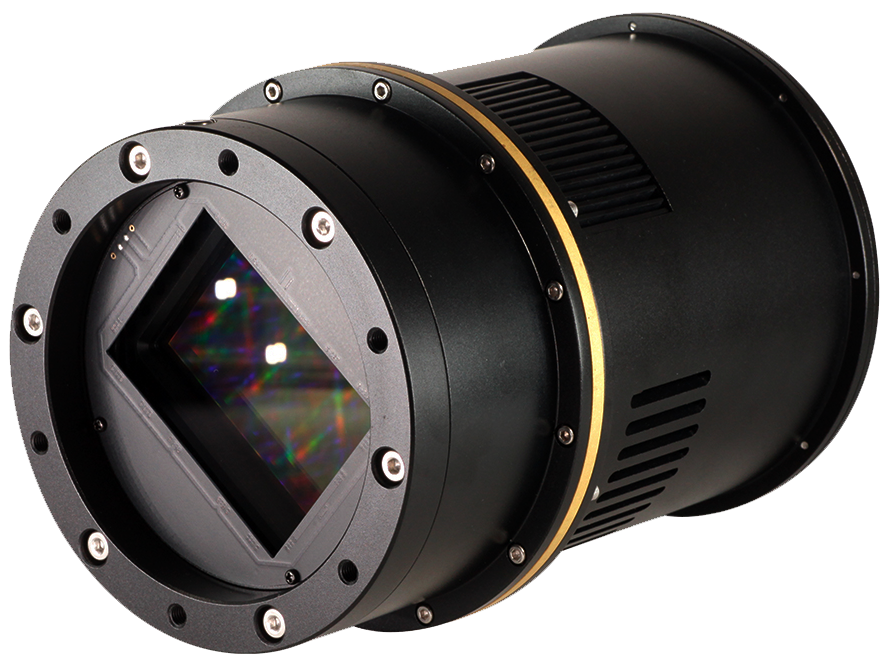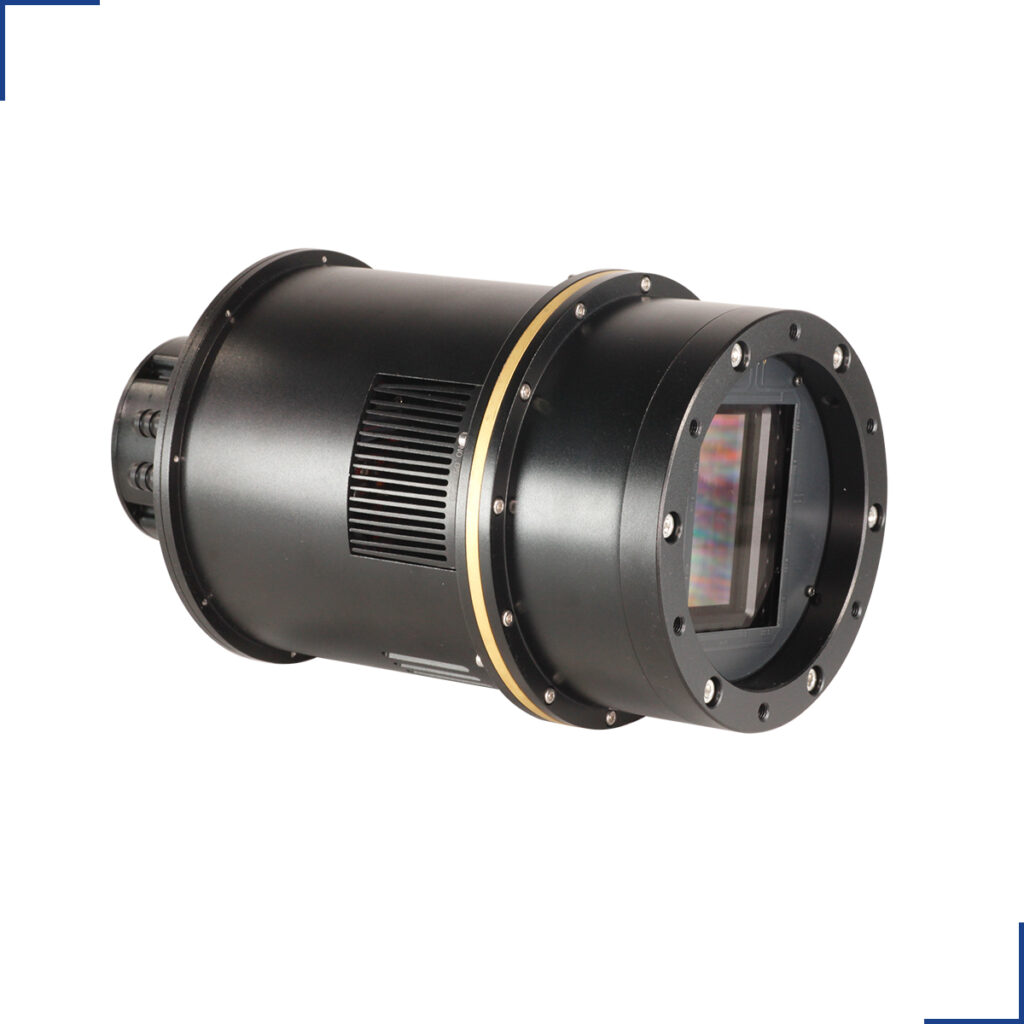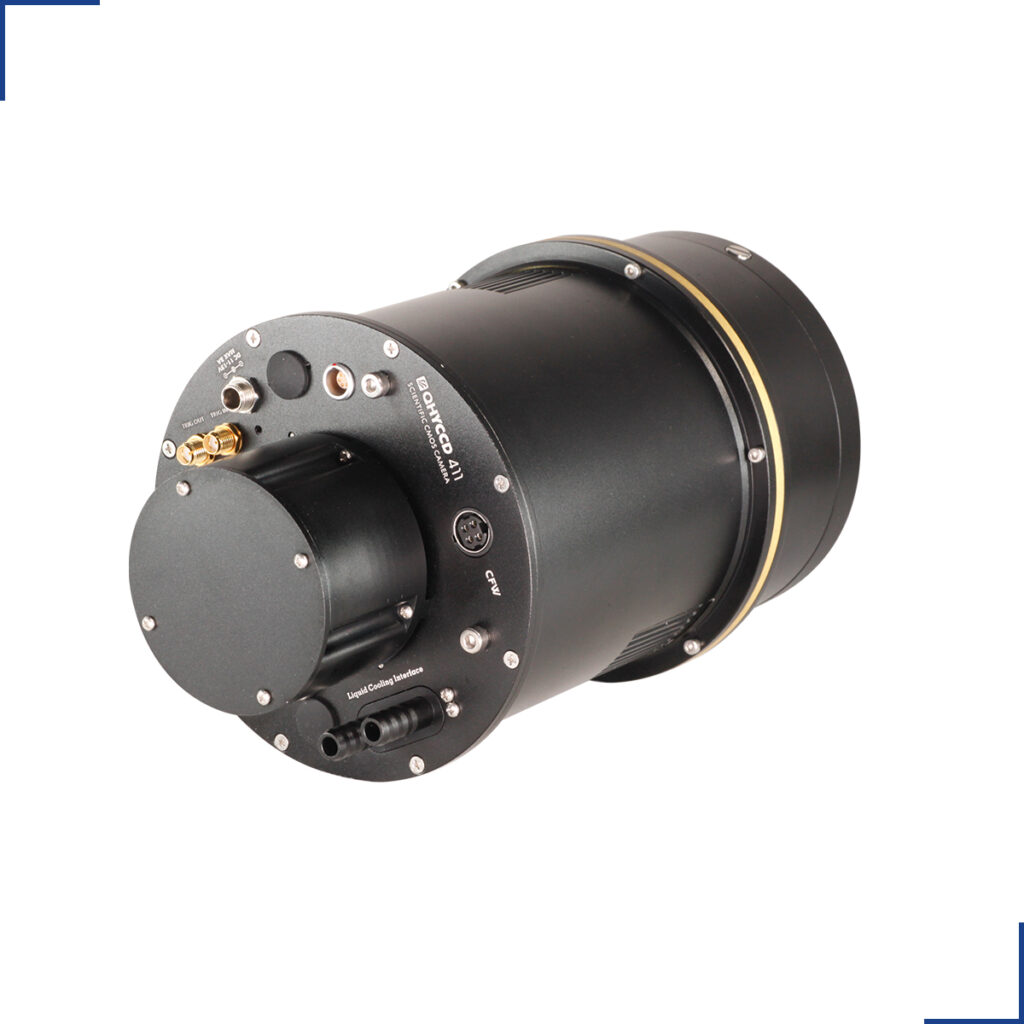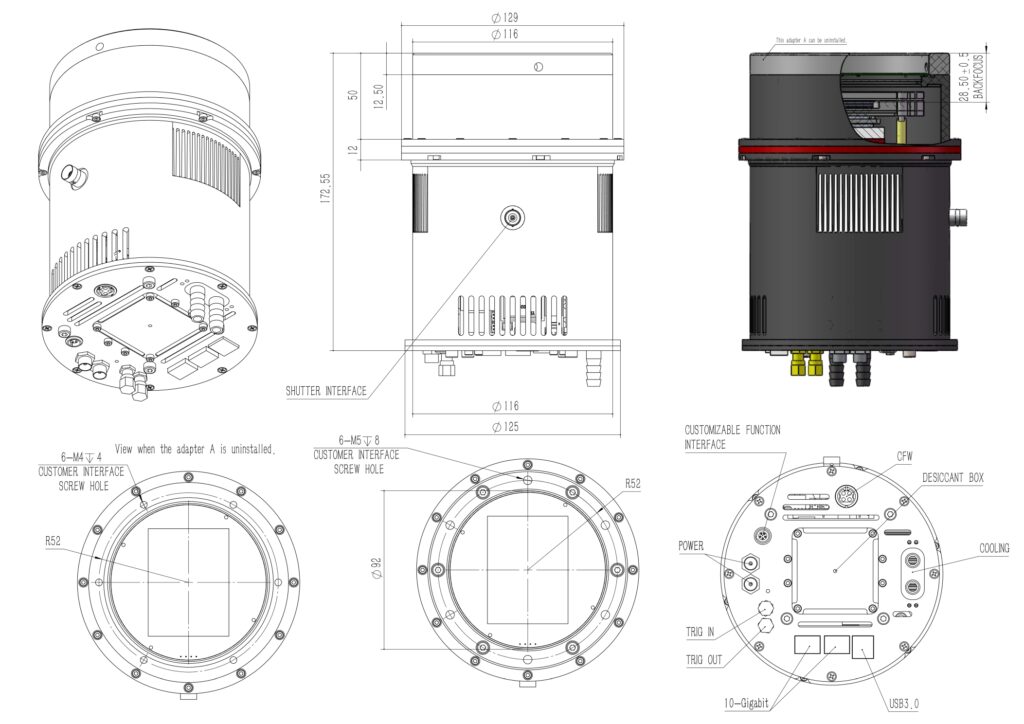Q15 – 150mp
The Q15 is MegaVision’s 150 Megapixel solution to high resolution and low noise image capture. The Q15 is actively cooled eliminating noise at any length of exposure.

The Q15 Camera is the largest resolution cooled CMOS camera in the world. The 150 Megapixel SONY IMX411BSI back-illuminated sensor has a 14192 x 10640-pixel array with 3.76 um pixels. The sensor size is 54 mm x 40 mm and is able to achieve ultra-low levels of dark noise.
| Model | Q15 |
| Image Sensor | SONY IMX411 BSI CMOS Sensor |
| Pixel Size | 3.76um x 3.76um |
| Color / Mono Version | Monochrome |
| Image Resolution | 14304 x 10748 (Includes the optic black area and over scan area) |
| Effective Pixels | 151 Megapixels |
| Effective Image Area | 54mm x 40mm |
| Sensor Surface Glass | AR+AR multi-coating Clear Glass |
| Full Well Capacity (1×1, 2×2, 3×3) | 50ke- / 200ke- / 450ke- in Standard Mode 80ke- / 320ke- / 720ke- in Extend Fullwell Mode |
| A/D | 16-bit (0-65535 grayscale) |
| Sensor Size | TYPICAL 4.2inch |
| Read Noise | Approx 1 to 3 e (in HGC Mode) |
| Dark Current | Approx 0.0011e/pixel/sec at -20C |
| Exposure Time Range | 20us – 3600sec |
| Frame Rate | USB3.0 Port: Full Frame Resolution 2FPS @ 8BIT 1FPS @ 16BIT 5000Lines 4FPS @ 8BIT 2FPS @16BIT 3000Lines 7FPS @ 8BIT 3.3FPS @16BIT 2000Lines 10FPS@8BIT 5.5FPS @16BIT 1000Lines 20FPS@8BIT 10FPS @16BIT 500Lines 35FPS@8BIT 19FPS @ 16BITFiber Port : TBD |
| Shutter Type | Electric Rolling Shutter |
| Computer Interface | USB3.0 and 2*10Gigabit Fiber |
| Trigger Port | Programmable TrigOut, High Speed Sync Port / GPS interface Port |
| Filter Wheel Interface | 4PIN CFW Port |
| Built-in Image Buffer | 2GByte |
| FPGA Upgrade Via USB | Support |
| Cooling System | Dual Stage TEC cooler(-35C below ambient with air cooling, -45C below ambient with ambient temperature water cooling). More deltaT below ambient can be achieve by using the cooled water cooling. (Test temperature +20°) Fan Cooling/Water Cooling Compatible |
| Recommended flow rates for water-cooled versions | 12ml/s |
| Anti-Dew Heater | Yes |
| Telescope Interface | Six Screw holes (See mechanical drawing) |
| Optic Window Type | AR+AR High Quality Multi-Layer Anti-Reflection Coating |
| Back Focal Length | 16mm(without tilt adjust ring) 28.5mm (with tilt adjust ring) |
| Weight | 3lb |
Native 16 bit A/D: The new Sony sensor has native 16-bit A/D on-chip. The output is real 16-bits with 65536 levels. Compared to 12-bit and 14-bit A/D, a 16-bit A/D yields higher sample resolution and the system gain will be less than 1e-/ADU with no sample error noise and very low read noise.
BSI: One benefit of the back-illuminated CMOS structure is improved full well capacity. This is particularly helpful for sensors with small pixels. In a typical front-illuminated sensor, photons from the target entering the photosensitive layer of the sensor must first pass through the metal wiring that is embedded just above the photosensitive layer. The wiring structure reflects some of the photons and reduces the efficiency of the sensor. In the back- illuminated sensor the light is allowed to enter the photosensitive surface from the reverse side. In this case the sensor’s embedded wiring structure is below the photosensitive layer. As a result, more incoming photons strike the photosensitive layer and more electrons are generated and captured in the pixel well. This ratio of photon to electron production is called quantum efficiency. The higher the quantum efficiency the more efficient the sensor is at converting photons to electrons and hence the more sensitive the sensor is to capturing an image of something dim.
Zero Amplify Glow: This is also a zero amplifier glow camera.
TRUE RAW Data: In the DSLR implementation there is a RAW image output, but typically it is not completely RAW. Some evidence of noise reduction and hot pixel removal is still visible on close inspection. This can have a negative effect on the image for astronomy such as the “star eater” effect. However, the Q15 Camera offer TRUE RAW IMAGE OUTPUT and produces an image comprised of the original signal only, thereby maintaining the maximum flexibility for post-acquisition astronomical image processing programs and other scientific imaging applications.
Anti-Dew Technology: The Q15 cooled camera has implemented fully dew control solutions. The optic window has built-in dew heater and the chamber is protected from internal humidity condensation. An electric heating board for the chamber window can prevent the formation of dew and the sensor itself is kept dry with our silicon gel tube socket design for control of humidity within the sensor chamber.
Cooling: In addition to dual stage TE cooling, Q15 implements proprietary technology in hardware to control the dark current noise.
Benefiting from its back-illuminated pixel structure, the Q15 has a large full well of 80ke-. And when using 2 * 2 binning, the full well can reach 320ke-, corresponding to a merged pixel size of 7.5um * 7.5um. Combined with the low readout noise, the camera has a large dynamic range advantage.
Who is it for?
Institutions and individuals who aim to achieve an unprecedented level of performance for multispectral documentation, forensics, scientific imaging, and fine-art photography.


